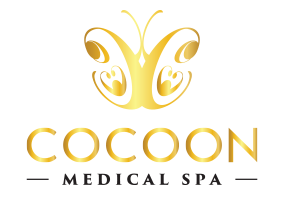What is this treatment – how does this treatment work?
RFM involves penetration of micro needles into the dermis and deliver radio frequency pulse into the targeted tissues. The micro needles create micro injuries to the dermis, to initiate a healing cascade. Injured cells release growth and wound healing signals to undifferentiated cells which results in a localized inflammatory response lasting from one to six hours after the procedure, and then fibroblasts are stimulated to produce new collagen. This new collagen fills in the wounded areas, atrophic scars (acneic), and thickens the skin. This process of neo-collagenesis can last from weeks, to up to 6–8 months after the last procedure. The heat generated by RF produces a healing response that causes collagen production and remodelling, allowing the skin to thicken and adhere closer to the muscular structure of the body.
Platelet-rich plasma (PRP) is blood plasma that has been enriched with platelets, which involved in the clotting process. As platelets are organized in the clot, they release several different growth factors and other cytokines to promote healing and tissue responses, including attracting stem cells to repair the damaged area. When used in injured or damaged tissue, they can induce a remodelling of the tissue to a healthier and younger state.
How is it better to other treatments / technologies in the market today?
- Lesions can be selectively treated according to the length of needle.
- There is minimal side effect in epidermis because of the insulation needle.
- Downtime is short.
- After the medical procedure, there is no scab.
- Less pain.
- Combination with PRP makes the healing faster.
What are the best skin types and patients for this treatment?
RFM is indicated to tighten and lift skin, to treat wrinkles, large pores, stretch marks, and improve acne scarring.
Persons who have the following conditions may not be treated: skin infections or disease excluding acne, bleeding disorders, patients on anticoagulants, pregnancy, keloid constitution, pacemaker vascular stent or implant, skin malignancy.
Does it hurt?
A topical anaesthetic is applied to the area to be treated to make the procedure more comfortable about 30 minutes before the procedure begin.
How long does the treatment take?
It depends on treatment area; it’s about 60–90 minutes.
What are the risks?
- Immediately after treatment there may be some pinpoint bleeding and sometimes swelling which can be minimized with cooling packs after treatment.
- Infection really rare can be avoided by proper after care treatment. Even though the needles are sterilized, bacterial infection can still occur.
- Pigmentation is caused by picking the skin and excessive sun exposure after treatment.
- Folliculitis caused by sebum temporary increase that block pores, will quickly resolve.
- Redness is variable from patient to patient and usually settles in 24–48 hours.
- Small marks may persist for a few days, and dryness of the skin for 3–7 days.
- Bruising is also a possibility, as the needle is used to place the PRP into the skin, may take a week or so to resolve.
- Dehydration skin may happen, mostly unseen, only feel the skin is flaking.
What is the downtime?
By leaving the entire epidermal layer intact, RFM allows the patient to resume normal activities quickly.
What should I do after treatment to get the best results?
Aftercare plays an important role in reducing recovery time. Keep the area clean, even from make-up following the initial treatment session. Use sunscreen to avoid pigmentation from sun exposure. Massage should be avoided at this time. More aggressive treatment may result in skin flaking as the new skin layer regenerates, moisturizer is recommended.
When should I start seeing results?
It takes some time for your body to produce collagen, about 1 – 4 weeks; the tightening effect and final result are going to appear gradually over 6–8 months
Combination Treatment with Co2 Fractional
Once RF energy is penetrated into the dermis, column of target tissue in the dermis, it processes to regenerate the skin. After the RF microneedle treatment, CO2 fractional laser is irradiating on epidermal area. Since light energy turns into thermal energy on a skin surface as shown in the picture, the thermal energy spreads and expands its area from the irradiation spot to its circle surroundings. Then, combination treatment of RF microneedle and CO2 fractional is flattening the rough skin.


